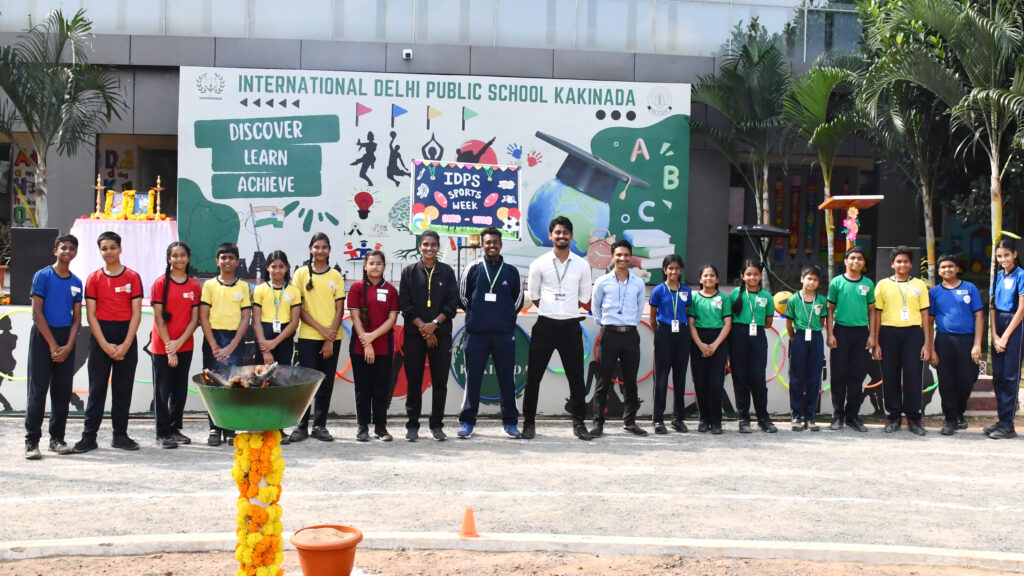Why Are These Measures Important?
In today’s world, safety concerns in schools have become increasingly significant. From unauthorized access and bullying to natural emergencies and cyber threats, educational institutions must be prepared for a wide range of scenarios. Security measures at DPS Kakinada aim to:
- Protect students from external and internal threats.
- Prevent accidents and respond effectively during emergencies.
- Promote a culture of responsibility and vigilance.
- Reassure parents about their children’s well-being.
- Foster an atmosphere where students can learn without fear or distraction.
How Are the Security Measures Implemented?
Delhi Public School Kakinada follows a structured, proactive approach to implementing security measures. The school regularly updates its safety protocols and infrastructure based on best practices and evolving risks. Here’s how these measures are integrated:
- Risk Assessment & Planning: A security audit is conducted to assess potential vulnerabilities on campus. Based on this, customized safety plans are developed and regularly reviewed.
- Training and Awareness: Staff, students, and support personnel undergo periodic training on safety protocols, emergency response drills, and responsible behavior. Awareness sessions are also conducted to educate students about personal safety and cyber hygiene.
- Technology Integration: CCTV surveillance, biometric attendance systems, and GPS-enabled school buses are used to ensure real-time monitoring and tracking.
- Collaboration with Authorities: The school maintains active communication with local law enforcement and emergency services to ensure rapid support during crises.
Key Features of DPS Kakinada’s Security System
- CCTV Surveillance: The campus is equipped with high-definition CCTV cameras installed at strategic locations including entry/exit points, classrooms, corridors, playgrounds, and buses. This ensures continuous monitoring and acts as both a deterrent and investigative tool.
- Secure Entry and Exit Protocols: Entry into the school is strictly controlled. All visitors must present valid identification and register at the security desk. Access cards and biometric systems are used for staff and student entry, reducing the chances of unauthorized access.
- Trained Security Personnel: Well-trained, professional security guards are stationed at key locations throughout the campus. They monitor all movements, conduct routine checks, and assist during emergencies.
- GPS-Enabled School Transport: DPS Kakinada’s school buses are equipped with GPS tracking systems, allowing real-time monitoring by parents and the school administration. Each bus also has a female attendant and first-aid kits for added safety.
- Fire Safety Systems: The school is equipped with fire alarms, extinguishers, and emergency exits. Fire drills are conducted regularly to ensure preparedness among students and staff.
- Child Protection Policy: DPS Kakinada has a clear and strict child protection policy. Teachers and staff are trained to identify signs of bullying, abuse, or emotional distress. A designated child safety officer is available to address concerns confidentially and professionally.
- Health and Medical Safety: A full-time nurse is stationed in the school infirmary, and emergency medical care is readily available. The school also partners with local hospitals for emergency support.
- Cybersecurity Measures: With increasing digital engagement, the school has implemented robust cybersecurity protocols. Firewalls, secure networks, and restricted access policies are in place to ensure safe internet usage. Digital literacy programs are also conducted for students.
Benefits of the Security Measures
- Peace of Mind for Parents: With strong safety systems in place, parents can be assured that their children are in a secure environment throughout the school day.
- Safe Learning Atmosphere: A secure campus fosters emotional well-being and helps students focus better on academics and extracurricular activities.
- Emergency Preparedness: Regular drills and training ensure that students and staff can respond swiftly and effectively during unforeseen situations.
- Reduced Incidents of Misconduct: With constant monitoring and strict behavioral policies, issues like bullying or vandalism are minimized.
- Accountability and Transparency: Real-time monitoring and access control systems ensure that every activity on campus is recorded and traceable, enhancing accountability.
- Support for Holistic Development: A safe environment enables students to explore, participate, and grow without fear—supporting the school’s mission of all-round development.
Conclusion
Delhi Public School Kakinada takes a proactive and holistic approach to student safety. Its comprehensive security measures—ranging from surveillance and secure access to staff training and cyber safety—demonstrate a strong commitment to safeguarding its students. By continuously evaluating and upgrading these systems, the school ensures that every child learns in a safe, secure, and nurturing environment. With such initiatives, DPS Kakinada not only sets a benchmark in academic excellence but also in ensuring the well-being and protection of its students, every single day.
Frequently Asked Questions
DPS institutions typically employ trained security personnel at entry and exit points, utilize CCTV surveillance across the campus, and enforce strict visitor verification processes to ensure a secure environment.
Schools often conduct regular safety drills, including fire evacuation and earthquake response exercises, to familiarize students with emergency protocols and ensure preparedness.
DPS schools usually equip buses with GPS tracking systems, CCTV cameras, and have trained attendants on board. Regular maintenance checks and adherence to safety guidelines are standard practices.
Institutions often have a well-equipped infirmary staffed by qualified medical personnel to address health concerns and emergencies promptly.
Younger students are typically supervised by trained staff members, and areas like washrooms are monitored to ensure safety and hygiene.
Parents are encouraged to communicate with school authorities and participate in orientation sessions where safety protocols and measures are discussed.








